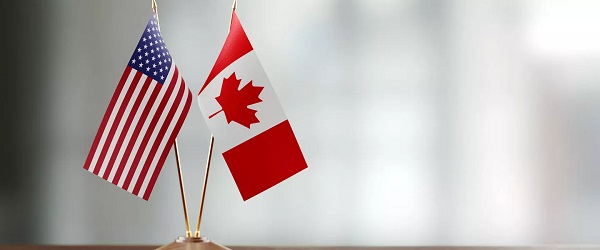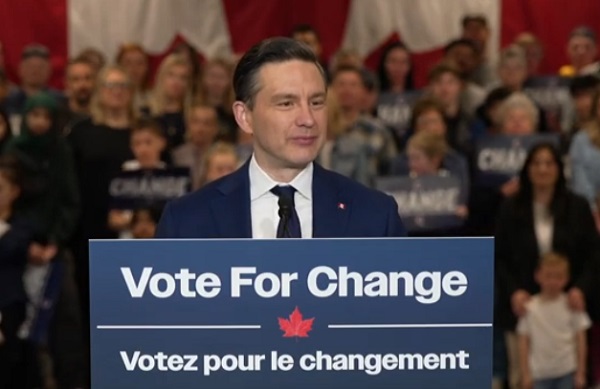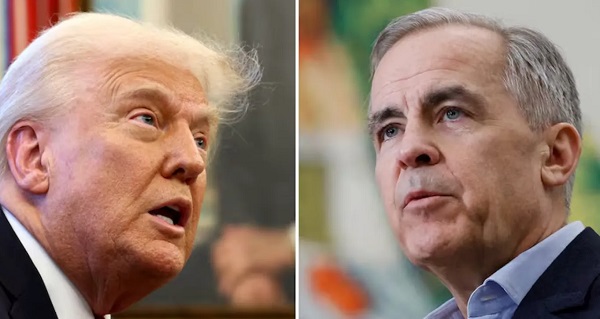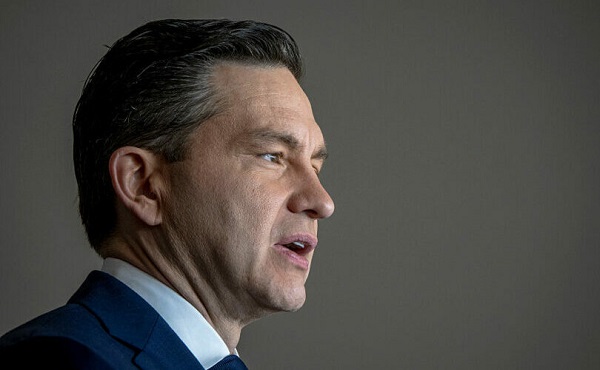Business
Trump, taunts and trade—Canada’s response is a decade out of date

From the Fraser Institute
Canadian federal politicians are floundering in their responses to Donald Trump’s tariff and annexation threats. Unfortunately, they’re stuck in a 2016 mindset, still thinking Trump is a temporary aberration who should be disdained and ignored by the global community. But a lot has changed. Anyone wanting to understand Trump’s current priorities should spend less time looking at trade statistics and more time understanding the details of the lawfare campaigns against him. Canadian officials who had to look up who Kash Patel is, or who don’t know why Nathan Wade’s girlfriend finds herself in legal jeopardy, will find the next four years bewildering.
Three years ago, Trump was on the ropes. His first term had been derailed by phony accusations of Russian collusion and a Ukrainian quid pro quo. After 2020, the Biden Justice Department and numerous Democrat prosecutors devised implausible legal theories to launch multiple criminal cases against him and people who worked in his administration. In summer 2022, the FBI raided Mar-a-Lago and leaked to the press rumours of stolen nuclear codes and theft of government secrets. After Trump announced his candidacy in 2022, he was hit by wave after wave of indictments and civil suits strategically filed in deep blue districts. His legal bills soared while his lawyers past and present battled well-funded disbarment campaigns aimed at making it impossible for him to obtain counsel. He was assessed hundreds of millions of dollars in civil penalties and faced life in prison if convicted.
This would have broken many men. But when he was mug-shotted in Georgia on Aug. 24, 2023, his scowl signalled he was not giving in. In the 11 months from that day to his fist pump in Butler, Pennsylvania, Trump managed to defeat and discredit the lawfare attacks, assemble and lead a highly effective campaign team, knock Joe Biden off the Democratic ticket, run a series of near daily (and sometimes twice daily) rallies, win over top business leaders in Silicon Valley, open up a commanding lead in the polls and not only survive an assassination attempt but turn it into an image of triumph. On election day, he won the popular vote and carried the White House and both Houses of Congress.
It’s Trump’s world now, and Canadians should understand two things about it. First, he feels no loyalty to domestic and multilateral institutions that have governed the world for the past half century. Most of them opposed him last time and many were actively weaponized against him. In his mind, and in the thinking of his supporters, he didn’t just defeat the Democrats, he defeated the Republican establishment, most of Washington including the intelligence agencies, the entire corporate media, the courts, woke corporations, the United Nations and its derivatives, universities and academic authorities, and any foreign governments in league with the World Economic Forum. And it isn’t paranoia; they all had some role in trying to bring him down. Gaining credibility with the new Trump team will require showing how you have also fought against at least some of these groups.
Second, Trump has earned the right to govern in his own style, including saying whatever he wants. He’s a negotiator who likes trash-talking, so get used to it and learn to decode his messages.
When Trump first threatened tariffs, he linked it to two demands: stop the fentanyl going into the United States from Canada and meet our NATO spending targets. We should have done both long ago. In response, Trudeau should have launched an immediate national action plan on military readiness, border security and crackdowns on fentanyl labs. His failure to do so invited escalation. Which, luckily, only consisted of taunts about annexation. Rather than getting whiny and defensive, the best response (in addition to dealing with the border and defence issues) would have been to troll back by saying that Canada would fight any attempt to bring our people under the jurisdiction of the corrupt U.S. Department of Justice, and we will never form a union with a country that refuses to require every state to mandate photo I.D. to vote and has so many election problems as a result.
As to Trump’s complaints about the U.S. trade deficit with Canada, this is a made-in-Washington problem. The U.S. currently imports $4 trillion in goods and services from the rest of the world but only sells $3 trillion back in exports. Trump looks at that and says we’re ripping them off. But that trillion-dollar difference shows up in the U.S. National Income and Product Accounts as the capital account balance. The rest of the world buys that much in U.S. financial instruments each year, including treasury bills that keep Washington functioning. The U.S. savings rate is not high enough to cover the federal government deficit and all the other domestic borrowing needs. So the Americans look to other countries to cover the difference. Canada’s persistent trade surplus with the U.S. ($108 billion in 2023) partly funds that need. Money that goes to buying financial instruments can’t be spent on goods and services.
So the other response to the annexation taunts should be to remind Trump that all the tariffs in the world won’t shrink the trade deficit as long as Congress needs to borrow so much money each year. Eliminate the budget deficit and the trade deficit will disappear, too. And then there will be less money in D.C. to fund lawfare and corruption. Win-win.
2025 Federal Election
As PM Poilievre would cancel summer holidays for MP’s so Ottawa can finally get back to work

From Conservative Party Communications
In the first 100 days, a new Conservative government will pass 3 laws:
1. Affordability For a Change Act—cutting spending, income tax, sales tax off homes
2. Safety For a Change Act to lock up criminals
3. Bring Home Jobs Act—that repeals C-69, sets up 6 month permit turnarounds for new projects
No summer holiday til they pass!
Conservative Leader Pierre Poilievre announced today that as Prime Minister he will cancel the summer holiday for Ottawa politicians and introduce three pieces of legislation to make life affordable, stop crime, and unleash our economy to bring back powerful paycheques. Because change can’t wait.
A new Conservative government will kickstart the plan to undo the damage of the Lost Liberal Decade and restore the promise of Canada with a comprehensive legislative agenda to reverse the worst Trudeau laws and cut the cost of living, crack down on crime, and unleash the Canadian economy with ‘100 Days of Change.’ Parliament will not rise until all three bills are law and Canadians get the change they voted for.
“After three Liberal terms, Canadians want change now,” said Poilievre. “My plan for ‘100 Days of Change’ will deliver that change. A new Conservative government will immediately get to work, and we will not stop until we have delivered lower costs, safer streets, and bigger paycheques.”
The ’100 Days of Change’ will include three pieces of legislation:
The Affordability–For a Change Act
Will lower food prices, build more homes, and bring back affordability for Canadians by:
- Cutting income taxes by 15%. The average worker will keep an extra $900 each year, while dual-income families will keep $1,800 more annually.
- Axing the federal sales tax on new homes up to $1.3 million. Combined with a plan to incentivize cities to lower development charges, this will save homebuyers $100,000 on new homes.
- Axing the federal sales tax on new Canadian cars to protect auto workers’ jobs and save Canadians money, and challenge provinces to do the same.
- Axing the carbon tax in full. Repeal the entire carbon tax law, including the federal industrial carbon tax backstop, to restore our industrial base and take back control of our economy from the Americans.
- Scrapping Liberal fuel regulations and electricity taxes to lower the cost of heating, gas, and fuel.
- Letting working seniors earn up to $34,000 tax-free.
- Axing the escalator tax on alcohol and reset the excise duty rates to those in effect before the escalator was passed.
- Scrapping the plastics ban and ending the planned food packaging tax on fresh produce that will drive up grocery costs by up to 30%.
We will also:
- Identify 15% of federal buildings and lands to sell for housing in Canadian cities.
The Safe Streets–For a Change Act
Will end the Liberal violent crime wave by:
- Repealing all the Liberal laws that caused the violent crime wave, including catch-and-release Bill C-75, which lets rampant criminals go free within hours of their arrest.
- Introducing a “three strikes, you’re out” rule. After three serious offences, offenders will face mandatory minimum 10-year prison sentences with no bail, parole, house arrest, or probation.
- Imposing life sentences for fentanyl trafficking, illegal gun trafficking, and human trafficking. For too long, radical Liberals have let crime spiral out of control—Canada will no longer be a haven for criminals.
- Stopping auto theft, extortion, fraud, and arson with new minimum penalties, no house arrest, and a new more serious offence for organized theft.
- Give police the power to end tent cities.
- Bringing in tougher penalties and a new law to crack down on Intimate Partner Violence.
- Restoring consecutive sentences for multiple murderers, so the worst mass murderers are never let back on our streets.
The Bring Home Jobs–For a Change Act
This Act will be rocket fuel for our economy. We will unleash Canada’s vast resource wealth, bring back investment, and create powerful paycheques for workers so we can stand on our own feet and stand up to Trump from a position of strength, by:
- Repealing the Liberal ‘No Development Law’, C-69 and Bill C-48, lifting the cap on Canadian energy to get major projects built, unlock our resources, and start selling Canadian energy to the world again.
- Bringing in the Canada First Reinvestment Tax Cut to reward Canadians who reinvest their earnings back into our country, unlocking billions for home building, manufacturing, and tools, training and technology to boost productivity for Canadian workers.
- Creating a One-Stop-Shop to safely and rapidly approve resource projects, with one simple application and one environmental review within one year.
Poilievre will also:
- Call President Trump to end the damaging and unjustified tariffs and accelerate negotiations to replace CUSMA with a new deal on trade and security. We need certainty—not chaos, but Conservatives will never compromise on our sovereignty and security.
- Get Phase 2 of LNG Canada built to double the project’s natural gas production.
- Accelerate at least nine other projects currently snarled in Liberal red tape to get workers working and Canada building again.
“After the Lost Liberal Decade of rising costs and crime and a falling economy under America’s thumb, we cannot afford a fourth Liberal term,” said Poilievre. “We need real change, and that is what Conservatives will bring in the first 100 days of a new government. A new Conservative government will get to work on Day 1 and we won’t stop until we have delivered the change we promised, the change Canadians deserve, the change Canadians voted for.”
Automotive
Canadians’ Interest in Buying an EV Falls for Third Year in a Row

From Energy Now
Electric vehicle prices fell 7.8 per cent in the last quarter of 2024 year-over-year, according to the AutoTader price index
Fewer Canadians are considering buying an electric vehicle, marking the third year in a row interest has dropped despite lower EV prices, a survey from AutoTrader shows.
Forty-two per cent of survey respondents say they’re considering an EV as their next vehicle, down from 46 per cent last year. In 2022, 68 per cent said they would consider buying an EV.
Meanwhile, 29 per cent of respondents say they would exclusively consider buying an EV — a significant drop from 40 per cent last year.
The report, which surveyed 1,801 people on the AutoTrader website, shows drivers are concerned about reduced government incentives, a lack of infrastructure and long-term costs despite falling prices.
Electric vehicle prices fell 7.8 per cent in the last quarter of 2024 year-over-year, according to the AutoTader price index.
The survey, conducted between Feb. 13 and March 12, shows 68 per cent of non-EV owners say government incentives could influence their decision, while a little over half say incentives increase their confidence in buying an EV.
-

 Business2 days ago
Business2 days agoIs Government Inflation Reporting Accurate?
-

 2025 Federal Election2 days ago
2025 Federal Election2 days agoCarney’s Hidden Climate Finance Agenda
-

 2025 Federal Election2 days ago
2025 Federal Election2 days agoWhen it comes to pipelines, Carney’s words flow both ways
-

 2025 Federal Election2 days ago
2025 Federal Election2 days agoStudy links B.C.’s drug policies to more overdoses, but researchers urge caution
-

 2025 Federal Election2 days ago
2025 Federal Election2 days agoPolls say Canadians will give Trump what he wants, a Carney victory.
-

 2025 Federal Election1 day ago
2025 Federal Election1 day agoCarney Liberals pledge to follow ‘gender-based goals analysis’ in all government policy
-

 2025 Federal Election1 day ago
2025 Federal Election1 day agoPoilievre’s Conservatives promise to repeal policy allowing male criminals in female jails
-

 2025 Federal Election1 day ago
2025 Federal Election1 day agoTrump Has Driven Canadians Crazy. This Is How Crazy.






